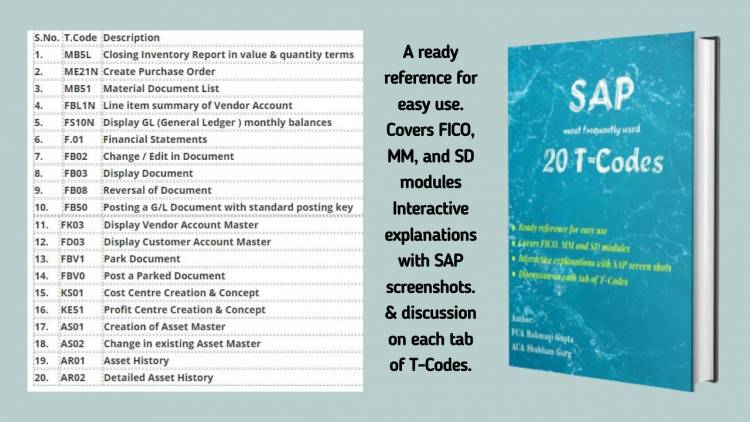FAQ on TDS on Bank FD & Income tax
1. What is the rate of TDS on FD?
4. How I can save TDS on FD interest?
5. How much amount of FD interest is tax-free?
6. If TDS is applicable on Recurring Deposits (RD)?
7. Why to furnish PAN no for Bank FD?
8. What can I do when the bank deducts more TDS on my FDs?
9. How I can get refund of TDS on Bank FD interest?
10. What is tax on Bank FD interest?
11. What is tax on NRO FD Interest & NRE FD Interest?
12. Can I claim TDS on Bank interest refund without filing ITR?
13. If TDS is deducted on bank interest on FD maturity?
14. If TDS is refunded by the bank?
15. Bank has deducted my TDS but not showing 26AS, What to do?
16. What are the changes in the TDS provision on FD interest by Interim Budget 2019?
17. For AY 2020-21, if up to 5 lacs slab, there is no tax?
What is rate of TDS on FD?
Rate of TDS on FD is 10% if the amount of interest in a bank / post office exceeds Rs. 40000 in a financial year. The limit of amount of 40000 has been increased from 10000 W.e.f from 01/04/2019, this limit is Rs. 50000 for senior citizens.
Rate of TDS also differs based on PAN information:
- If our PAN No. is available with bank, bank deducts TDS @10% and deposit it to the Govt & credit it our PAN no so that we can take benefit of it.
- If our PAN No. is not available with bank, bank deducts TDS @20% and deposit it to Govt. without credit to us. So we lose 20% completely.
When Bank deduct TDS?
Bank deducts TDS if following conditions are met:- (w.e.f 01/04/2019)
- We should have interest on fixed deposit,
- interest on saving bank is not subject to TDS.
- Interest on FD should be more than 40000. (In case of senior citizen this limit is 50000)
- This limit of FD interest of 40000 is in a financial year (Apr-Mar)
- This limit of FD interest of 40000 is bank wise not branch wise,
Means in case of non-senior citizen we should have more than 40000 FD interest in a bank including all branches in a financial year. Then bank will deduct TDS on FD interest @10%
Also bank will deduct TDS on entire amount when it exceeds 40000 for example, if we have FD interest of 35000 in a year in a bank, bank will not deduct any TDS.
But if we have interest of 55000 in a year in a bank , the bank will deduct TDS on FD interest of entire 55000 @10% i.e. 5500.
What is TDS on FD?
TDS (Tax deducted at source) is a deduction made by banks from interest on fixed deposits if the interest on FD with a bank/post office in a financial year exceeds Rs. 40000. (In case of senior citizen this limit is 50000).
Bank deducts TDS on accrued interest at the end of each year, even if the same is paid or not to us. So we need to show our income as bank interest of that accrued amount.
Bank deducts TDS out of our FD Interest & deposit it with Govt. on our behalf if our PAN no is available with bank, that TDS will reflect in our 26 AS, we can claim that TDS as credit out of our tax liability.
How I can save TDS on FD interest?
TDS on FD interest with bank/ post office is deductible if the total amount of interest in a financial year exceeds Rs. 40000 (in case of senir citizen 50000) per bank / post office including all the branches. We can save TDS on FD Interest by following method:
- Submit 15G/ 15H
We can submit form 15G /15 H to the bank if our total taxable income is below 2.5 lac i.e. taxable limit, this limit is after deducting all the deductions & exemptions available.
form 15G is for all the individuals, 15H is for senior citizens.
- Split FD in different banks: -
Since TDS on FD interest is bank wise (including all branches), to avoid TDS deductions we can split FDs in different banks so that our interest on FD in a financial year in a bank does ot exceed 40000 /50000.
- Split FD in different names :-
If you have already money lying in different family members bank account, it is always advisable to do FD in their bank account only so that the limit of 40000 / 50000 per year per bank may not hit & you can avoid tax deduction on FD.
If the money is in one account, you can still split it in your close members like kids or spouse account for FD so as to avoid TDS deduction on FD interest but this will not save your overall tax liability because in that case clubbing provision will attract.
- FD with Post Office:-
You can do some FDs in post office also it also carries same limits of 40000 / 50000 per person in a year.
- Choosing right time periods for FD:-
If we choose middle or end of financial year so that interest of 1 year gets split into 2 financial years so that our TDS limit on FD interest of 40000/50000 per bank/post office will not hit & we can avoid TDS deduction on that FD interest amount.
For example if we have a FD of 10 lacs for a year with interest rate of 7% p.a., if we make deposit at beginning of year say at 1st Apr, bank will deduct TDS on accrued interest of entire 70000 at 10% i.e 7000, but if we make FD at mid of the year say at 1st Oct the accrued interest for 6 months in first year would be 35000 & in next year also it would 35000, so in both the year we would be below TDS applicability limit on bank interest & we can get entire 70000 in our bank as FD interest without TDS deduction.
How much amount of FD interest is tax free?
FD interest are tax free upto Rs. 50000 only for Individuals who are senior citizens or super senior citizens, for others FD interest are taxable if their income is above taxable limits of 250000 as per their slab of income tax applicability.
However u/s 80 TTA of income tax Act, interest on saving bank is exempt upto Rs. 10000 for all Individuals & HUF below the age of 60 years, & u/s 80TTA of income tax Act ,for senior citizen this exemption is upto Rs.50000 including all kind of interest like saving bank interest, Bank FDs or post office deposit/ FD.
Also there are limits of TDS on FD which is 40000 (for senior citizens 50000) per bank per person in a financial year, but this limit is only for TDS deduction, it does not affect your final tax liability as per above rules.
If TDS is applicable on Recurring Deposits (RD)?
RD (Recurring Deposits) are at par with Fixed Deposits as far as TDS is concerned, for FD & RD both taken together, Bank will deduct TDS, if the Interest on FD is more then 40000 (for senior citizens 50000) in a year in a bank.
TDS would be deducted @ 10% on entire interest if above limit crosses.
TDS is on accrued interest, whether paid or not.
….................................................
Why to furnish PAN no for Bank FD?
For FD in bank, if we furnish PAN No., bank will deduct TDS @10% , if the Interest on FD is more then 40000 (for senior citizens 50000) in a year in a bank.
And will deduct TDS @20% if bank do not have your PAN information.
So the benefit of submitting PAN no. in bank FD are following:
- TDS would be deducted at lower rate of 10% instead of 20%.
- TDS would be credited to your PAN and will reflect in your 26 AS, which can be set off against our total tax liability while filing final income tax return at year end.
- In case PAN no is not submitted to bank, bank will deduct 20% & deposit it to Govt without credit to you because credit goes to PAN no. only. In that case you lose the entire 20% of your FD interest.
What can I do when bank deducts more TDS on my FDs?
In case we missed to submit our PAN no to the bank , bank deducts our TDS at 20% and also we did not get credit of that TDS in our 26 AS.
We can do following for correction of extra TDS deducted by Bank:-
- Go to bank, submit your updated PAN No.
- Ask bank to revise their TDS return & credit that TDS to your PAN No.
- Check your 26 AS after few days of filing of TDS return by bank
- File/Revise your income tax return to declare interest income & claim the TDS against total tax liability.
- Tax refund will arise if you have already paid taxes on your income, or you are below taxable limits.
How I can get refund of TDS on Bank FD interest?
To get the refund of TDS on Bank FD Interest:
- We need to file ITR
- Declare our interest income
- Check 26 AS for TDS deducted, if not reflecting approach the bank
- Claim the TDS against your tax liability
- FD interest are taxable at the rate of normal slabs as applicable to any assessee, if your income is below taxable limits, there would be no tax liability & entire TDS will show as refund to you.
- File the ITR.
- You will refund once ITR will process, usually it takes 2-3 months to process your ITR.
What is tax on Bank FD interest?
Bank FD interest are taxable at the rate applicable at the normal income tax slabs as per their total income including interest income.
Following are the exemptions available for interest on Bank :
- There is a exemption upto 10000 on saving bank interest for individuals & HUF other than senior citizen.
- Senior citizens can avail exemption upto 50000 for any interest including saving bank, FD, post office deposits etc.
What is tax on NRO FD Iinterest & NRE FD Interest?
NRO FD interest is taxable at the same rate as Indian banks saving & FD interests, NRE saving & FD interest is not taxable.
Following are the exemptions rules for NRO /NRE FD & saving bank interest
- Interest on saving account as NRO bank account is taxable as normal interest as income from other sources.
- Interest on NRO Account is eligible for claiming deduction u/s 80TTA upto 10000 for non senior citizen
- FD interest on NRO Account of senior citizen is not eligible for any deduction u/s 80TTB.
- TDS rate on NRO account is 30%.
- There is no basic exemption limit for TDS deduction on NRO FD interest.
- Entire NRO interest including FD interest is subject to TDS @30% plus surcharge.
- NRE Account Saving & FD interest both are not taxable so not subject to any TDS.
Can I claim TDS on Bank interest refund without filing ITR?
No, we can claim back the refund of bank interest only after filing ITR.
If TDS is deducted on bank interest on FD maturity?
No TDS is deducted by bank yearly on accrual basis, whether FD is matured in the year or not, whether interest is paid or not.
TDS on interest will be deducted by bank if our accrued interest for a person exceeds 40000 (50000 in case of senior citizen) in a financial year in a bank including all branches.
………………………………………………………………………
If TDS is refunded by bank?
No bank only deducts TDS & deposit it to Govt., and passes on the credit to our PAN through TDS return, TDS is refunded by Income tax department, when we file our income tax return showing all the incomes during a financial year.
If we have paid taxes including TDS more than our tax liability or we are below taxable limits, a refund will shown in our ITR. Once ITR got processed we will get refund in our bank account directly by income tax dept.
Bank has deducted my TDS but not showing 26AS, What to do?
When bank has deducted our TDS but still not showing in 26 AS means
either bank has not filed their TDS return
Or bank has shown wrong PAN No. for your TDS while filing the TDS return.
For the correction of above, you need to approach the bank with your updated PAN details ask them to file / revise their TDS return.
What are changes in TDS provision on FD interest by Interim Budget 2019?
Before the Interim Budget 2019, the bank has to deduct TDS if the total interest in a bank in a FY is more than 10000, In the Interim budget 2019, Finance Minister has increased this lmit of 10000 to 40000 (50000 for senior citizens) in a year.
However this does not affect the actual tax liability because taxability provisions of FD interest are same as earlier.
For AY 2020-21, if tax free slabs is upto 5 lacs?
No, in AY 2020-21, tax free slab of income is 250000 (3 lacs for senior citizen & 5 lacs for super senior citizen), but now the rebate has been increased to Rs. 12500 so an resident Individual having income upto 5 lacs will have no tax because slab rate between 2.5 lacs to 5 lacs is 5% thereby maximum tax would be 12500 which will be reduced by rebate.
But if you have taxable income after chapter VIA deductions is more than 5 lacs, then you are not eligible for rebate, because this rebate is applicable only for the Resident Individual having total taxable income upto 5 lacs.
Many people are confused with this rebate system and interpreting that there is no tax on income upto 5 lacs.
So the tax free slab is 2.5 lacs only for other than senior citizen. It is because of rebate resident individual will have tax free income up to 5 lacs provided they have their total taxable income not more than 5 lacs.
What is rebate u/s 87A?
Rebate u/s 87A is a provision for giving tax relief to the low bracket income earners.
From AY 2020-21 onwards following are the provisions related to rebate u/s 87A:-
- This rebate can be claimed only by resident individual.
- He must have his taxable income after claiming deduction u/s chapter VIA (Section 80) not more than 5 lacs
- This rebate is reduced from tax liability before adding 4 % health & education cess.
- This rebate is a not a refund but a relief so the amount of rebate will be capped to total tax liability for example if a person has total taxable income of 4 lacs , his tax liability will come as 7500 (5% on 150000), so the rebate u/s 87A would be allowed only 7500.
To many taxpayers this rebate is wrongly understood as they think that now the tax free slab for AY 2020-21 is 5 lacs, which is wrong for other than Resident Individuals for income upto 5 lacs.
……………………………………………………………..
 Download APP
Download APP
 P K Gupta
P K Gupta 






































